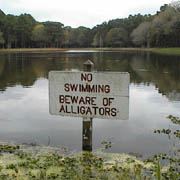Basin countries United States Area 10.12 km² Catchment area 134.7 km² | Surface area 2,500 acres (10 km) Surface elevation 0 cm | |
 | ||
Fish Striped bass, Largemouth bass, Ballerus ballerus Similar John Chesnut Senior Pa, Brooker Creek Preserve, Anderson Park, Anclote Key, Pinellas Trail | ||
Bass fishing lake tarpon fl after a tornado
Lake Tarpon is a freshwater lake located about 10 miles (16 km) west of Tampa in Palm Harbor and Tarpon Springs, Florida. Lake Tarpon is the largest lake in Pinellas County with a surface area of 2,500 acres (10 km2). Its watershed encompasses 52 square miles (130 km2) including the two largest tributaries, South Creek and Brooker Creek. Lake Tarpon can be visited at Anderson Park, Chesnut Park, or several other public access points. The lake is a regional recreational destination and is renowned for its largemouth bass fishing. Although Lake Tarpon is designated as a fishing and swimming lake, it fails to meet the EPA's standards, and is therefore listed as an impaired lake because it is over polluted. Lake Tarpon is not in attainment because the waters exceed its Total Maximum Daily Load (or TMDL) for Nutrients and as a result of excessive nutrients, low Dissolved Oxygen. Part of the pollution that enters Lake Tarpon is caused by fertilizers that have caused algae and unwanted weeds to grow. Some have suggested using liquid fertilizer to stop this. The logic being that liquid fertilizers are taken up by the plants while granular fertilizers are more likely to run off in rain water. Another problem Lake Tarpon faces is having low dissolved oxygen. As the nutrient load in the water increases, so do bacteria and other micro-organisms that consume the excess nutrients. These micro-organisms are largely aerobic (require oxygen to live). The micro-organisms consume the oxygen in the water, thus lowering the Dissolved Oxygen. The resultant decreased Dissolved Oxygen lowers biodiversity in the ecosystem. Increased nutrients in the water also increase the turbidity (murkiness) that recent samples show), and as a result can cause hypoxia (low oxygen) or a dead zone where life is unsustainable, as exemplified in the Gulf of Mexico.
